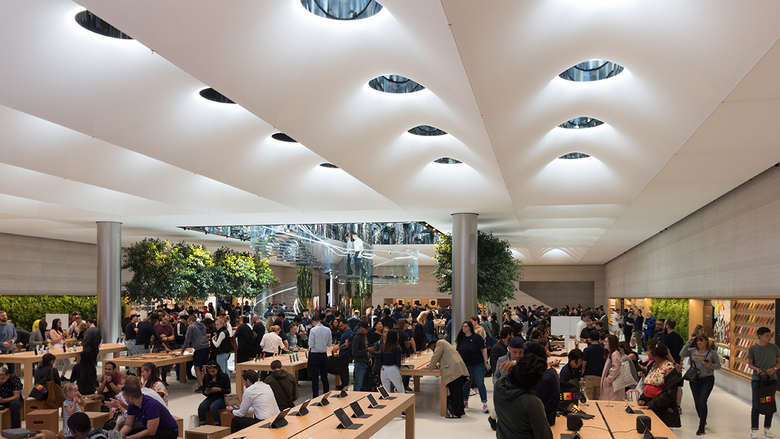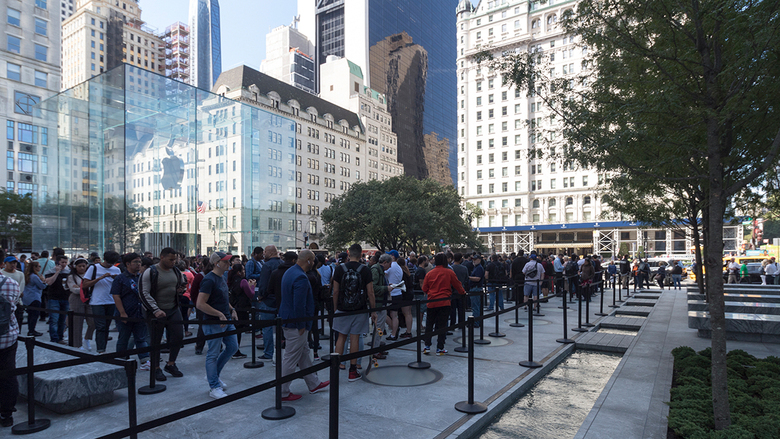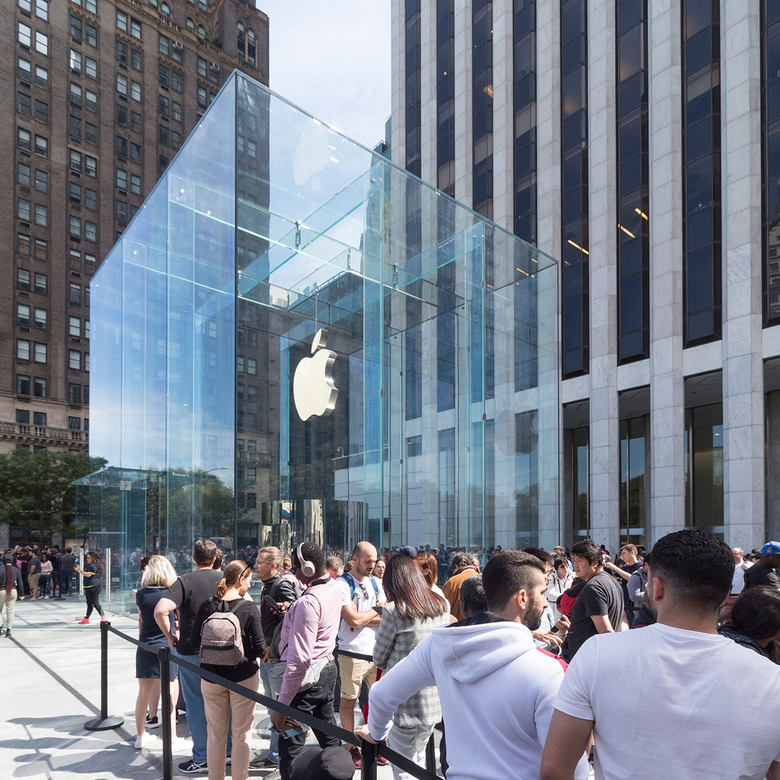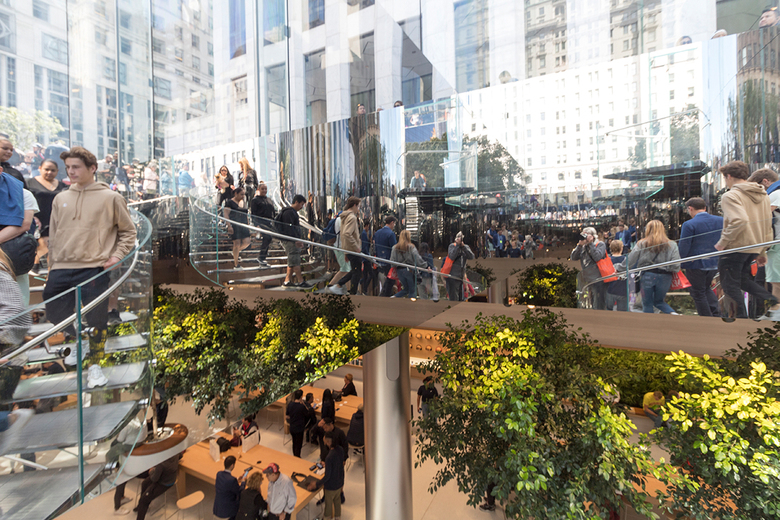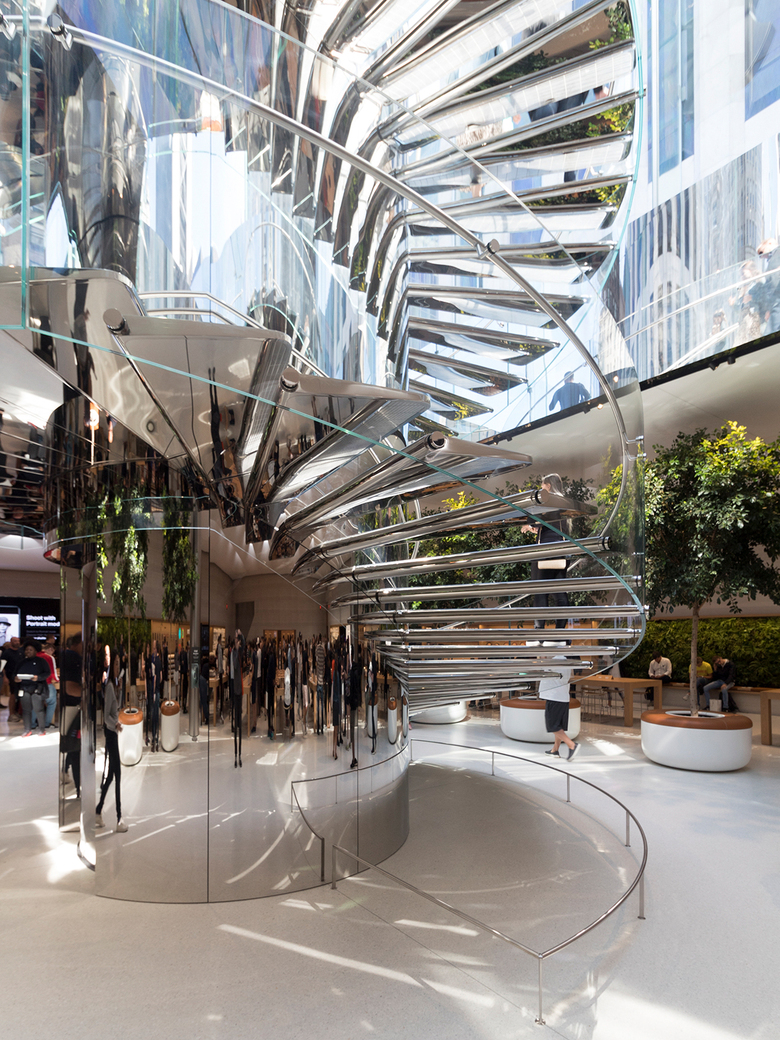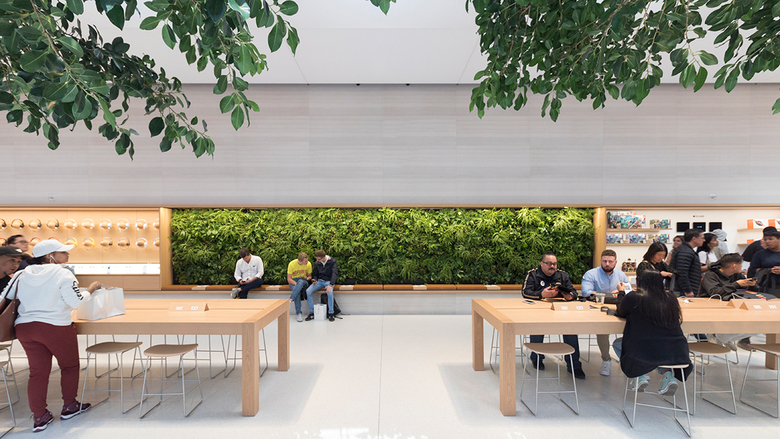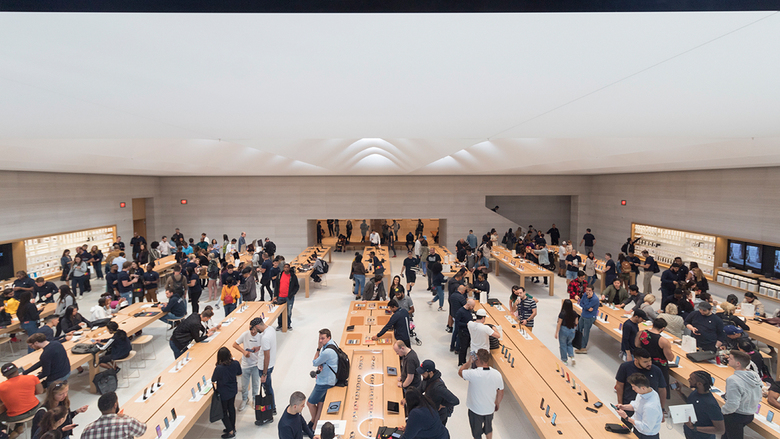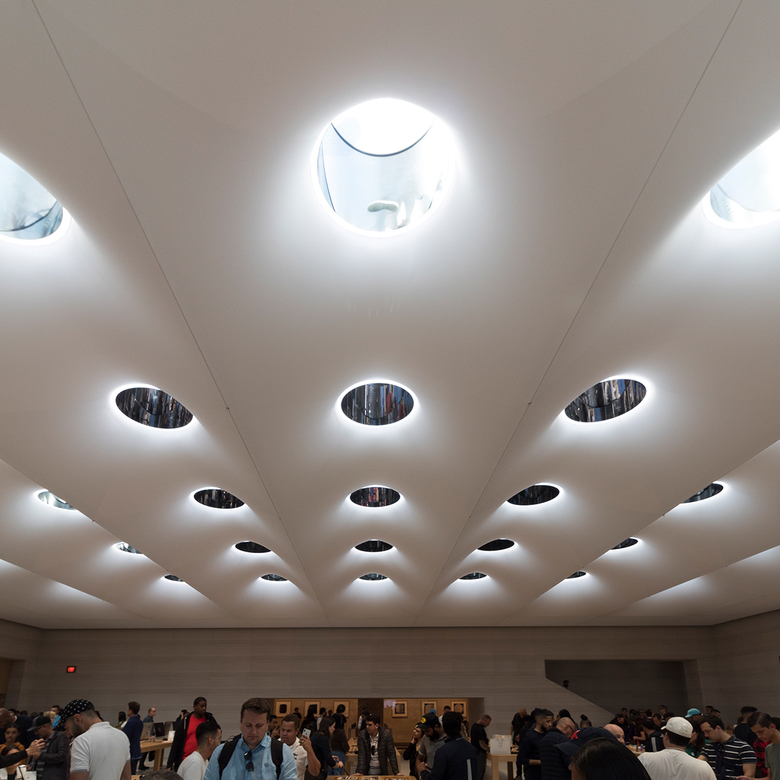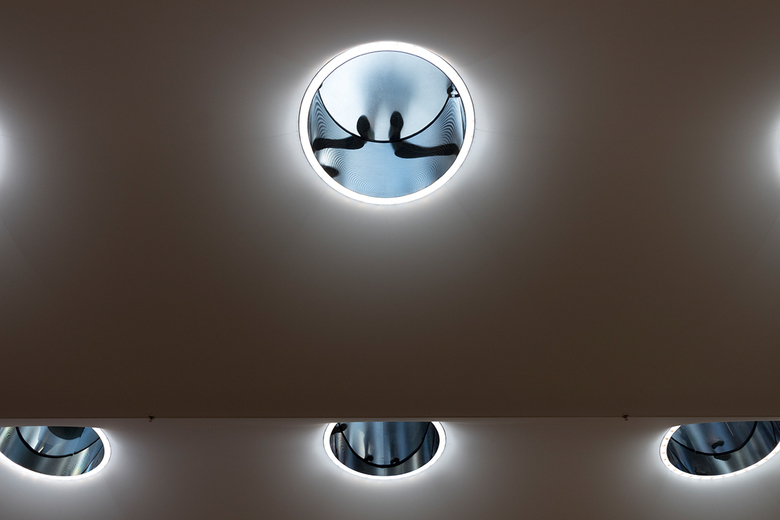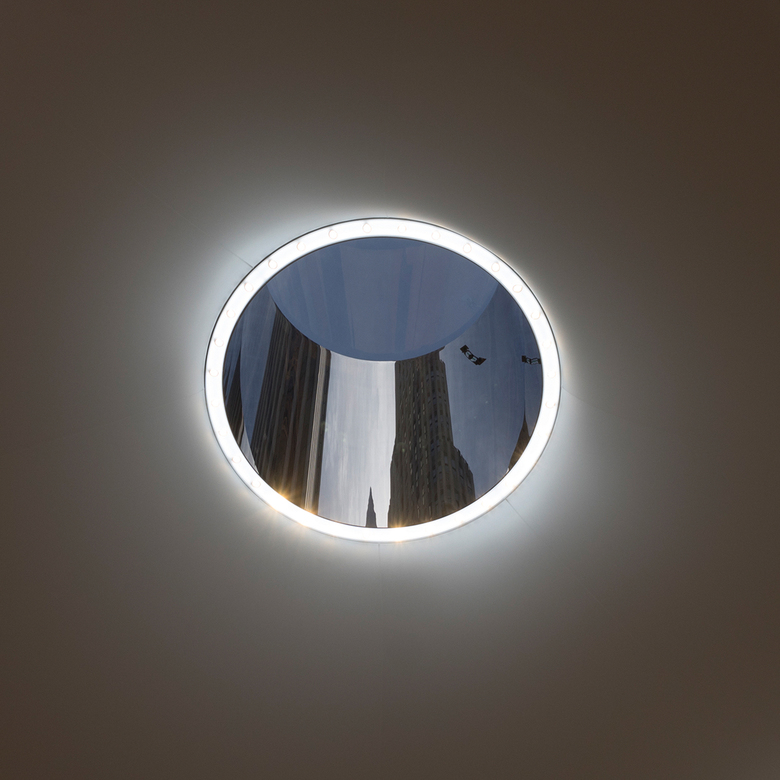Apple Reopens Its NYC Flagship
John Hill
20. 9月 2019
All photographs by John Hill/World-Architects
On Friday Apple reopened its 24-hour Fifth Avenue store in Manhattan. The famous glass cube is back, accompanied by a redesigned interior and plaza courtesy of Foster + Partners.
Closed since January 2017, Apple Fifth Avenue finally opened at 8am on Friday, September 20, nearly one year behind schedule but on the same day the iPhone 11 was made available. This obviously intentional timing meant the newly designed plaza was covered with people waiting for their new phones and was therefore barely perceptible when World-Architects stopped by the same morning. Nevertheless, the expanded store holds many delights in its redesigned interior.
First completed in 2006, Apple's NYC Flagship occupies the formerly sunken plaza in front of the GM Building, designed by Edward Durell Stone and completed in 1968. Filled in by Donald Trump in the short period when he owned the building around the turn of the century, Apple moved in post-Trump and turned the public space near the southeast corner of Central Park into the most photographed spot in all of New York City, enabled by the glass cube designed by Bohlin Cywinski Jackson.
Flash forward to 2019, when BCJ gives way to Norman Foster, Apple's go-to architect for their high-profile stores. Here, at Fifth Avenue and 59th Street, the glass cube is back, but the store beneath the plaza is dramatically different, with lots of natural light, a taller ceiling, and twice the square footage. Take a look at some photos from our visit on opening day.
